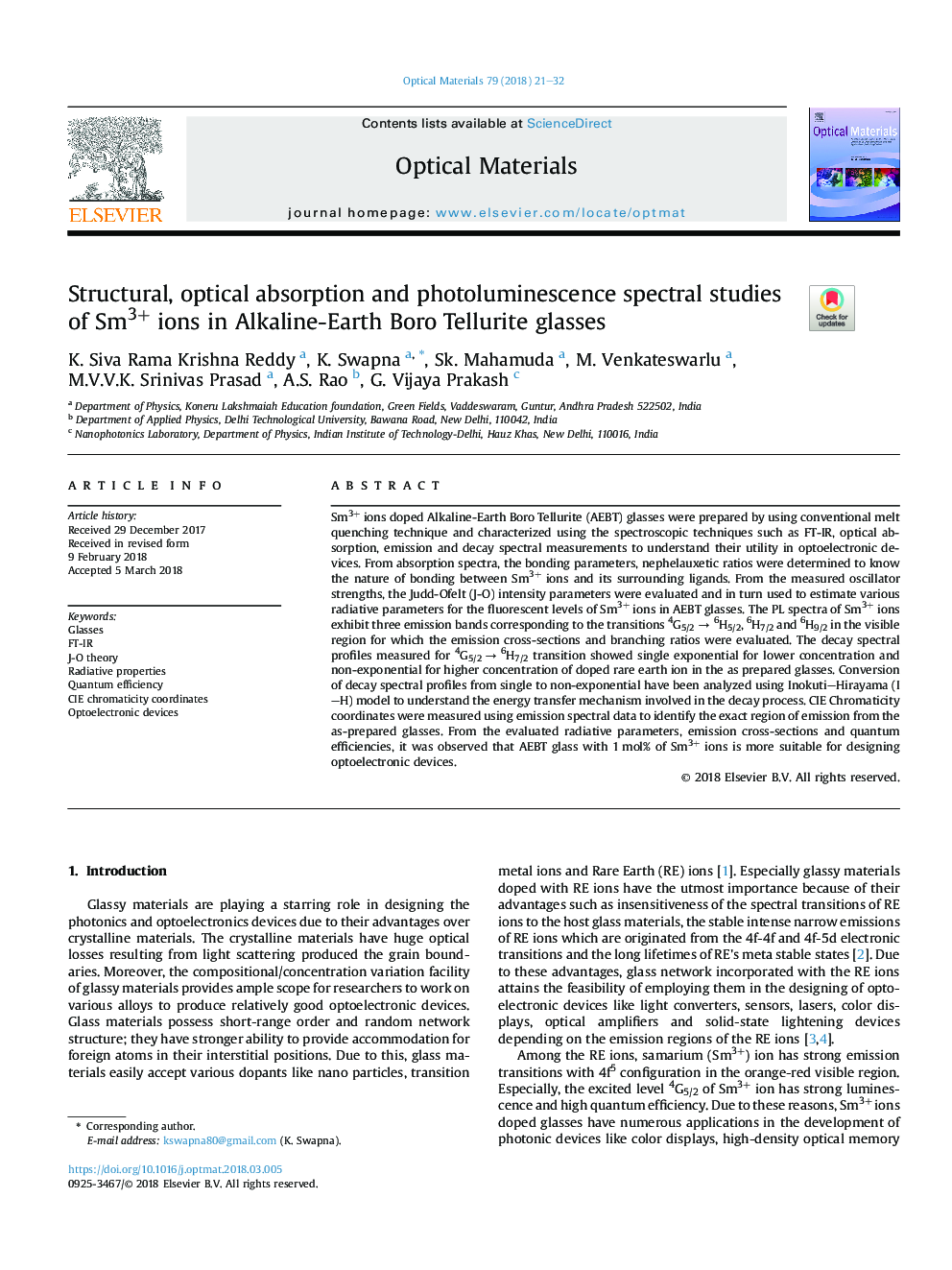| Article ID | Journal | Published Year | Pages | File Type |
|---|---|---|---|---|
| 7906469 | Optical Materials | 2018 | 12 Pages |
Abstract
Sm3+ ions doped Alkaline-Earth Boro Tellurite (AEBT) glasses were prepared by using conventional melt quenching technique and characterized using the spectroscopic techniques such as FT-IR, optical absorption, emission and decay spectral measurements to understand their utility in optoelectronic devices. From absorption spectra, the bonding parameters, nephelauxetic ratios were determined to know the nature of bonding between Sm3+ ions and its surrounding ligands. From the measured oscillator strengths, the Judd-Ofelt (J-O) intensity parameters were evaluated and in turn used to estimate various radiative parameters for the fluorescent levels of Sm3+ ions in AEBT glasses. The PL spectra of Sm3+ ions exhibit three emission bands corresponding to the transitions 4G5/2â¯ââ¯6H5/2, 6H7/2 and 6H9/2 in the visible region for which the emission cross-sections and branching ratios were evaluated. The decay spectral profiles measured for 4G5/2â¯ââ¯6H7/2 transition showed single exponential for lower concentration and non-exponential for higher concentration of doped rare earth ion in the as prepared glasses. Conversion of decay spectral profiles from single to non-exponential have been analyzed using Inokuti-Hirayama (I-H) model to understand the energy transfer mechanism involved in the decay process. CIE Chromaticity coordinates were measured using emission spectral data to identify the exact region of emission from the as-prepared glasses. From the evaluated radiative parameters, emission cross-sections and quantum efficiencies, it was observed that AEBT glass with 1â¯mol% of Sm3+ ions is more suitable for designing optoelectronic devices.
Keywords
Related Topics
Physical Sciences and Engineering
Materials Science
Ceramics and Composites
Authors
K. Siva Rama Krishna Reddy, K. Swapna, Sk. Mahamuda, M. Venkateswarlu, M.V.V.K. Srinivas Prasad, A.S. Rao, G. Vijaya Prakash,
